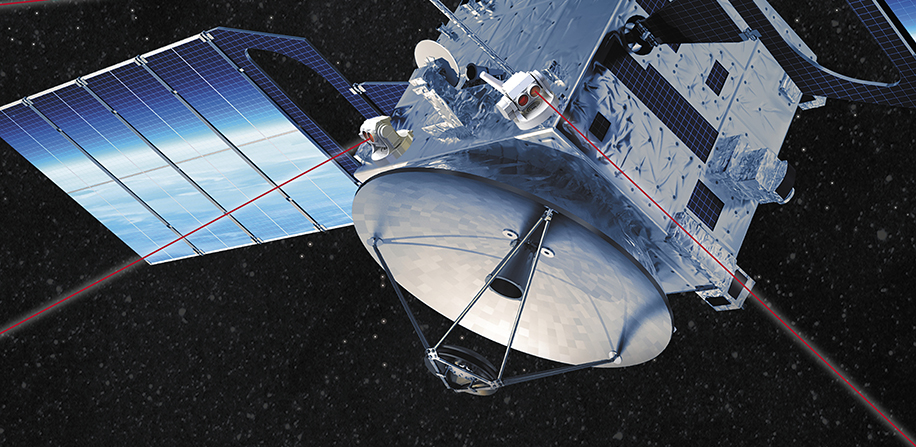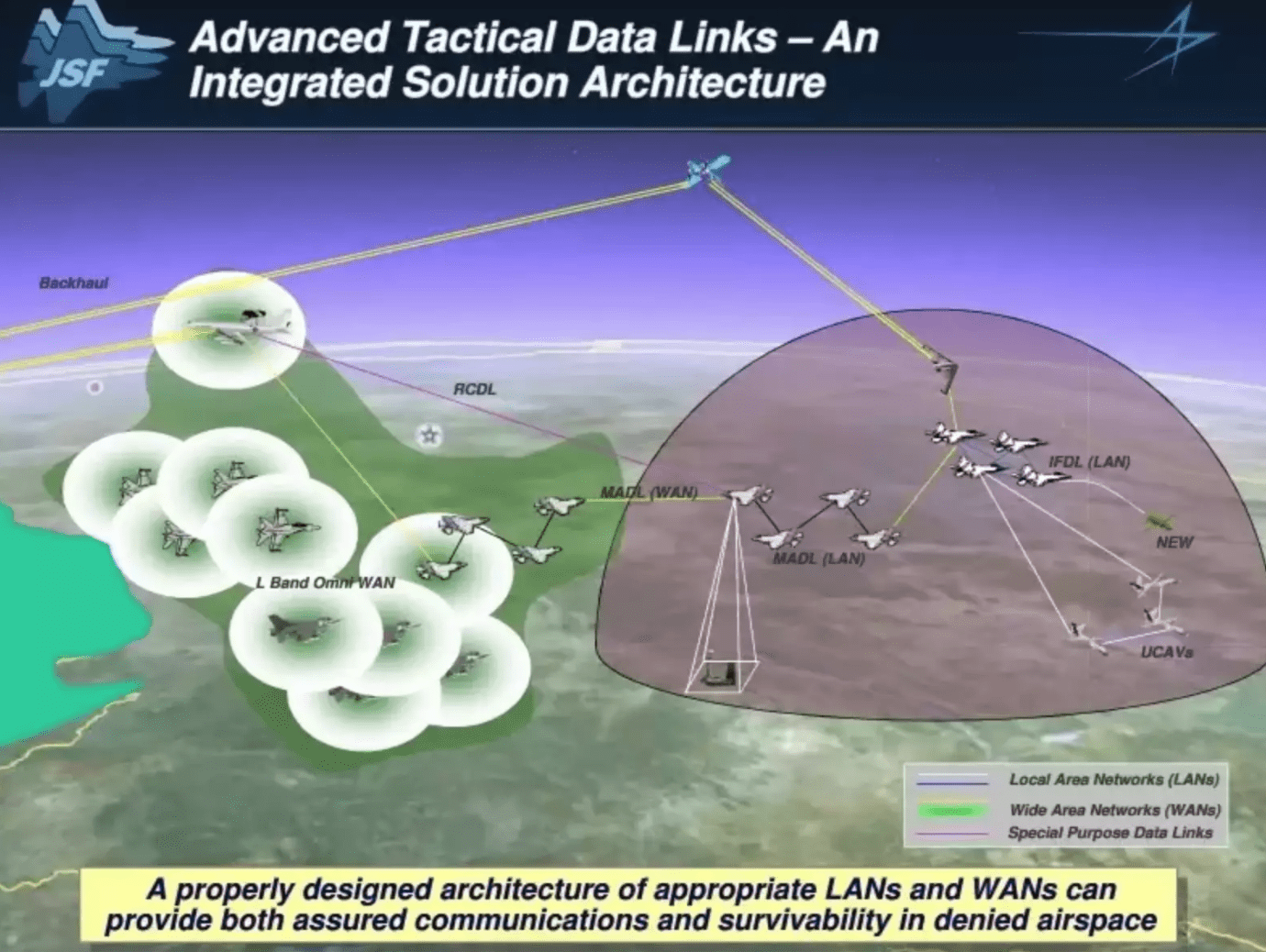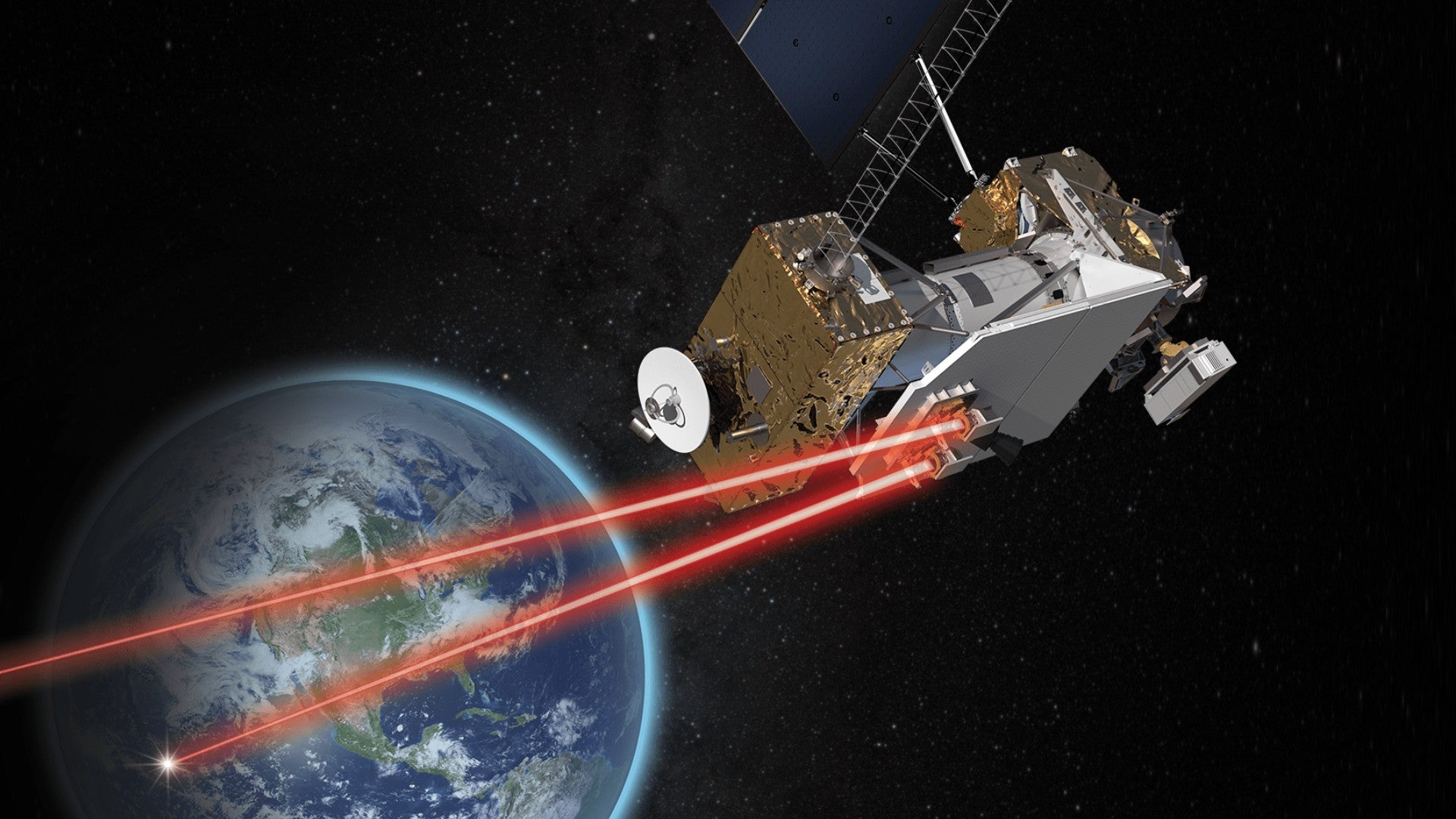The United States Air Force’s AFWERX program is funding the development of a pod to enable beyond-line-of-sight laser communications between aircraft and satellites in orbit. Such a concept is not new, but recent developments in optical technologies could make it more feasible to deploy such a system across a large force. Given the threats traditional radio frequency-based networks face, developing more resilient and hardened forms of communications, such as laser links, will no doubt prove very valuable in a future conflict in which electronic warfare could degrade the military’s vital networks.
AFWERX awarded a Phase 1 Small Business Technology Transfer contract this week to Space Micro, a San Diego-based firm that designs electro-optical sensors, software subsystems, and communications technologies for satellites. Space Micro is calling the project DEFORMO and says their goal is to develop an “Air-to-Space Laser Communications Pod that could be deployed on a variety of USAF aircraft.”

According to SpaceNews.com, an engineer working on the project said the goal of this contract is to design a pod “that could sit under the wing of a fighter jet like the F-35” and transmit up to 10 gigabits of data per second. The pod is intended to “provide an optical communication chain between airborne assets and geostationary communications satellites” and could be adapted for either manned or unmanned aircraft.
Space Micro CEO David Strobel said that this type of optical communication between an aircraft and a satellite involves “some of the hardest pointing and navigating that you could possibly do, especially if we’re told that they need to maintain this uplink while they’re maneuvering.” The company was awarded another contract from the Air Force last year to develop a system that can convert radiofrequency (RF) signals to optical communications, and vice-versa.
Obviously, maintaining a line-of-sight link between airborne and orbital assets is a complicated endeavor, particularly in a podded format that requires a clear view. The addition of pods can also present issues in terms of radar cross-section for stealthy jets like the F-35. However, a podded system could be easily and quickly integrated onto existing aircraft without the need to change their designs.
If this AFWERX-funded contract can produce a working laser communications pod that can be fitted to existing aircraft, it could open the door for directly integrating a similar system into manned and unmanned aircraft and other platforms that can function as sensor relays. Such a concept might be paired with high-altitude platforms to provide incredibly resilient beyond-line-of-sight communication relay capabilities for many other aircraft operating within line-of-sight, such as stealthy swarms of aircraft or munitions, even during a peer state conflict in which dense electronic warfare capabilities are present.
It would also be especially useful for stealthy assets, even those within line-of-sight of the centralized platform with the system deployed, that can need to operate under strict emissions controls in order to remain undetected. When paired with a mesh-like satellite network, somewhat similar to SpaceX’s Starlink, it also allows for a resilient communications system even if some satellites are lost or disabled due to enemy attacks.
The War Zone highlighted this technology specifically in our in-depth feature on the Air Force’s secretive high-altitude, long-endurance (HALE) stealth drone commonly referred to as the RQ-180, and what roles and missions it could be intended to fulfill.

As noted, unlike radiofrequency (RF) communications, an optical datalink like this would be nearly impossible to jam or intercept unless a hostile asset were to get physically in between the pod and the satellite. Laser links are also immune to electromagnetic interference or pulses, making them more resilient than RF-based communication systems. For these reasons, Space Micro’s Strobel says that such a pod could “give our stealth aircraft the ability to securely communicate during sensitive operations without giving away their positions.”
Despite being more hardened than RF communications, optical links come with their own challenges. For one, any air-to-space optical communications pod would have to carry a laser powerful enough to reach satellites in orbit, which in the past has presented obstacles in terms of size, power, and weight (SWAP). However, modern laser technologies have matured and miniaturized to the point where these factors aren’t anywhere near as limiting as they have been in recent decades. The higher the platform flies, the less atmospheric disruption there is as well.
Aside from SWAP considerations, an aircraft’s movements can create ‘jittering’ that affects the integrity of an optical connection, as can the turbulence created by aerodynamic forces. As with any optical connection between objects in space and objects within Earth’s atmosphere, there is also the issue of atmospheric scintillation, or interference. That’s where the concept of adaptive optics comes in. Adaptive optics, first developed throughout the Cold War as a classified technology that helped track Soviet satellites, uses advanced deformable mirrors and software that can measure and account for atmospheric interference.

The DEFORMO system being developed by Space Micro for the Air Force includes a patented “dual-adaptive mirror technology” being developed for NASA by Johns Hopkins University. Researchers affiliated with the school have previously published studies on the use of adaptive optics in airborne laser communications in conjunction with the Air Force Research Laboratory. Space Micro says this technology “effectively cancels out the uncertainties of the physics of Earth’s atmosphere” when it comes to transmitting high-speed optical communications.
The overall idea of using lasers as a secure optical communications link in space is not a new one. The first satellite-to-satellite laser link, at least that we know of, was made between two European satellites in 2001, and the Department of Defense (DOD) has had plans to test the concept since at least 2020. The Pentagon’s Space Development Agency plans to launch a constellation of 150 satellites by 2024 to build a faster, more hardened military communications network enabled by laser crosslinks. DARPA unveiled a similar plan last year known as the Space-Based Adaptive Communications Node, or Space-BACN.

Commercial satellite constellations like SpaceX’s Starlink, with whom the Air Force is partnering for future combat networking needs, have already begun using laser links to communicate with one another in space.
The DOD has even looked into using lasers to send communications between satellites and submarines. Lockheed Martin also examined the concept in the early 1990s.

Regardless, some progress has already been made in terms of equipping aircraft with beyond-line-of-sight laser communications links. General Atomics demonstrated their Airborne Laser Communication System (ALCoS) in 2020 in a test described as “a critical step towards enabling our aircraft with a high-bandwidth communication system that cannot be jammed or detected by an adversary.” ALCoS was designed to be compatible with medium-altitude, long-endurance UAVs such as the MQ-9 Reaper, and offers 300 times the data-carrying capacity of radiofrequency satellite links. Airbus has also announced plans to develop a similar system.
While laser links between aircraft and satellites once sounded far off, optics research has been steadily moving the idea closer to technological readiness. And these are developments in the unclassified realm. It is very likely the technology has moved forward in the classified domain, as well. Given the threat that American satellites now face daily, finding new forms of hardened communication between critical assets will no doubt be a priority in the near term.
Contact the author: Brett@TheDrive.com
